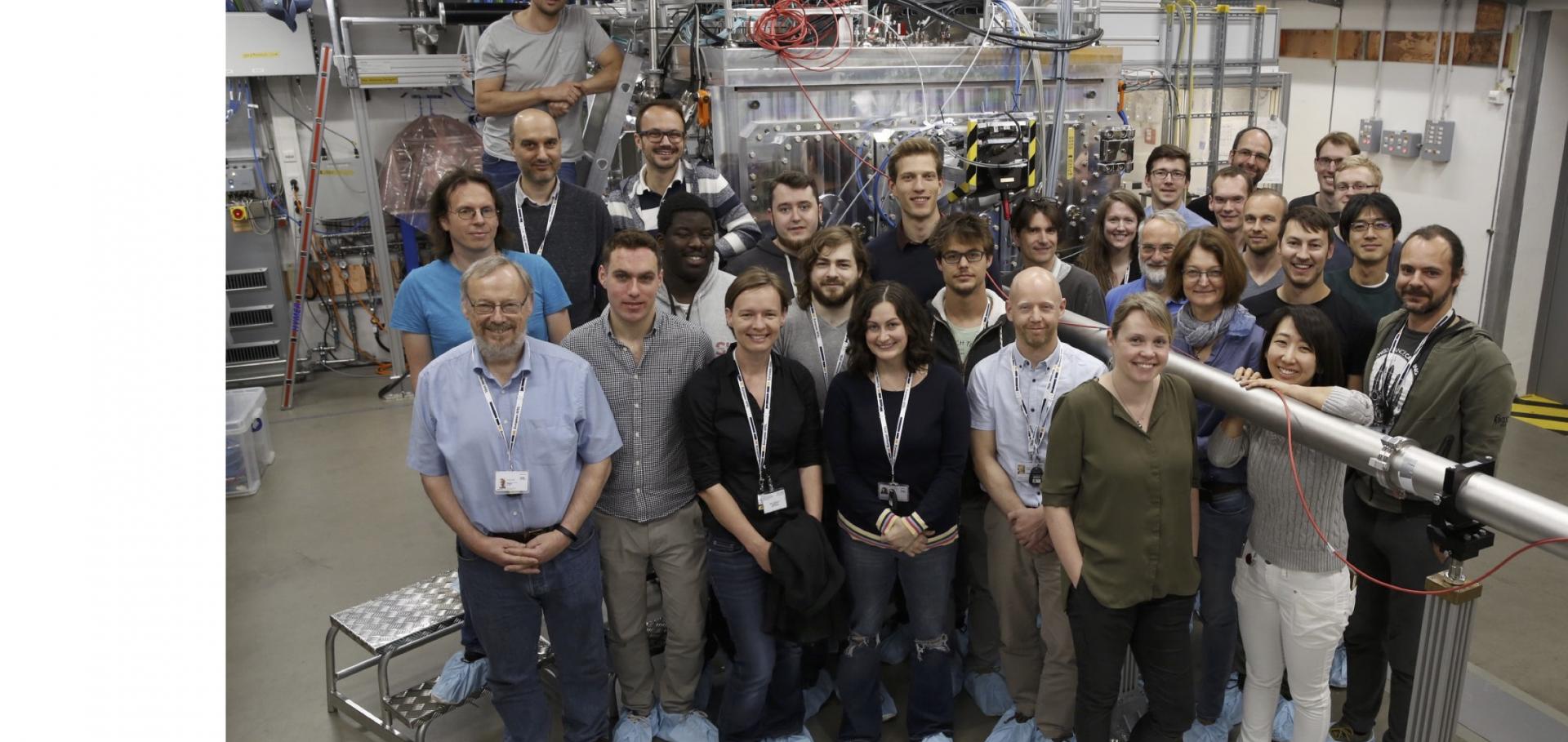The structure of liquid carbon elucidated by in situ X-ray diffraction
Abstract:
Carbon has a central role in biology and organic chemistry, and its solid allotropes provide the basis of much of our modern technology1. However, the liquid form of carbon remains nearly uncharted2, and the structure of liquid carbon and most of its physical properties are essentially unknown3. But liquid carbon is relevant for modelling planetary interiors4, 5 and the atmospheres of white dwarfs6, as an intermediate state for the synthesis of advanced carbon materials7, 8, inertial confinement fusion implosions9, hypervelocity impact events on carbon materials10 and our general understanding of structured fluids at extreme conditions11. Here we present a precise structure measurement of liquid carbon at pressures of around 1 million atmospheres obtained by in situ X-ray diffraction at an X-ray free-electron laser. Our results show a complex fluid with transient bonding and approximately four nearest neighbours on average, in agreement with quantum molecular dynamics simulations. The obtained data substantiate the understanding of the liquid state of one of the most abundant elements in the universe and can test models of the melting line. The demonstrated experimental abilities open the path to performing similar studies of the structure of liquids composed of light elements at extreme conditions.Isostructural phase transition of Fe2O3 under laser shock compression
Abstract:
We present in situ x-ray diffraction and velocity measurements of Fe2O3 under laser shock compression at pressures between 38–122 GPa. None of the high-pressure phases reported by static compression studies were observed. Instead, we observed an isostructural phase transition from 𝛼−Fe2O3 to a new 𝛼′−Fe2O3 phase at a pressure of 50–62 GPa. The 𝛼′−Fe2O3 phase differs from 𝛼−Fe2O3 by an 11% volume drop and a different unit cell compressibility. We further observed a two-wave structure in the velocity profile, which can be related to an intermediate regime where both 𝛼 and 𝛼′ phases coexist. Density functional theory calculations with a Hubbard parameter indicate that the observed unit cell volume drop can be associated with a spin transition following a magnetic collapse.Femtosecond temperature measurements of laser-shocked copper deduced from the intensity of the x-ray thermal diffuse scattering
Abstract:
We present 50-fs, single-shot measurements of the x-ray thermal diffuse scattering (TDS) from copper foils that have been shocked via nanosecond laser ablation up to pressures above ∼135 GPa. We hence deduce the x-ray Debye–Waller factor, providing a temperature measurement. The targets were laser-shocked with the DiPOLE 100-X laser at the High Energy Density endstation of the European X-ray Free-Electron Laser. Single x-ray pulses, with a photon energy of 18 keV, were scattered from the samples and recorded on Varex detectors. Despite the targets being highly textured (as evinced by large variations in the elastic scattering) and with such texture changing upon compression, the absolute intensity of the azimuthally averaged inelastic TDS between the Bragg peaks is largely insensitive to these changes, and allowing for both Compton scattering and the low-level scattering from a sacrificial ablator layer provides a reliable measurement of T /Θ2 D, where ΘD is the Debye temperature. We compare our results with the predictions of the SESAME 3336 and LEOS 290 equations of state for copper and find good agreement within experimental errors. We, thus, demonstrate that single-shot temperature measurements of dynamically compressed materials can be made via thermal diffuse scattering of XFEL radiation.Lattice stability of ultrafast-heated gold
Abstract:
First principle simulations within the framework of the finite-temperature density functional formalism predict the existence of nonthermal phase transitions in gold on ultrafast timescales with increasing electron temperature. The Gibbs free energy phase diagram as a function of electronic temperature indicates two solid-solid phase transitions of fcc→hcp at an electronic temperature of 1.2 eV and hcp→bcc at an electron temperature of 6.8 eV, while the ion lattice remains cold at zero temperature. We present a detailed analysis of the process of phonon-hardening in ultrafast-heated gold, using finite-temperature density functional perturbation theory simulations of the phonon spectra, the quantum thermodynamic phase diagram, and the thermoelastic properties.


